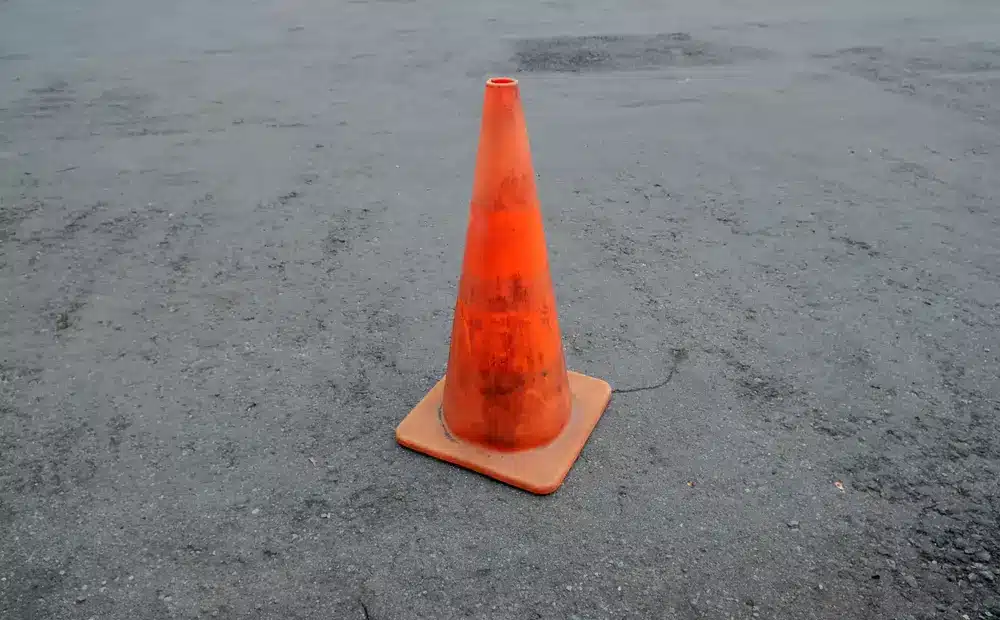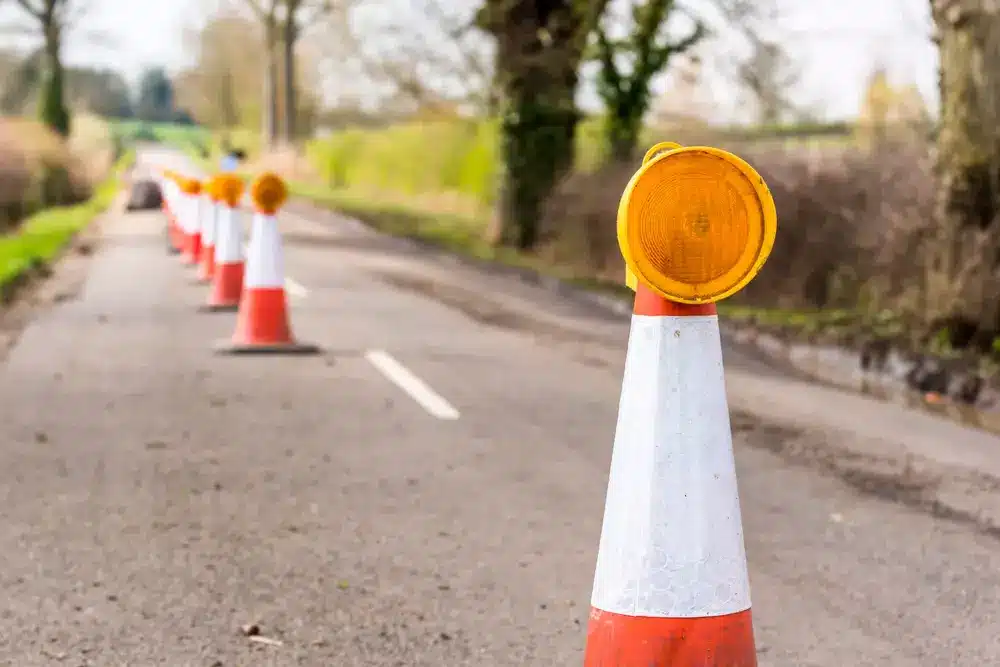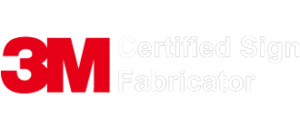Traffic cones are essential markers for road safety. They guide traffic, indicate hazards, and delineate work zones. While they may appear uniform, there are various types of traffic cones designed for specific needs. Understanding the types is crucial for effective traffic control and ensuring safety. We will explore seven of the most common types of traffic cones and their unique features, applications, and advantages.
1. Standard Traffic Cone
The standard traffic cone is the most commonly recognized and widely used type of cone. It typically features a vibrant orange color and conical shape and is made of durable materials such as PVC or rubber. These cones are designed to withstand outdoor conditions and provide drivers, pedestrians, and workers excellent visibility. Standard traffic cones often have reflective properties, with vertical and horizontal bands or strips, ensuring high visibility during both day and night. They are versatile and find applications in a wide range of settings, including road construction, maintenance, parking lots, and temporary traffic control. The standard traffic cone is a reliable and essential tool for directing traffic and enhancing safety on our roads.
2. Collapsible Traffic Cone
The collapsible type of traffic cone is a convenient and innovative variation of the standard traffic cone. Unlike traditional cones, collapsible cones are designed with a foldable feature, allowing them to be easily collapsed and stored in compact spaces when not in use. They are typically made of flexible yet durable materials such as PVC or nylon.
Collapsible traffic cones are lightweight and portable, making them ideal for situations where frequent setup and takedown are required, such as emergency response scenarios, temporary road closures, or quick maintenance tasks. Their compactness also enables easy transportation and storage in vehicles, minimizing clutter and maximizing efficiency. The collapsible traffic cone offers practicality and flexibility, providing an efficient solution for temporary traffic control needs.
3. Looper Tube Traffic Cones

Looper tube traffic cones, also known as “ring-top traffic cones” or “tube-top traffic cones,” are traffic cones that have a circular loop or tube attached to the top. This loop or tube serves as a receptacle for attaching accessories or devices, such as caution tape, flags, or signage. The loop allows for easy attachment and removal of these additional elements, enhancing the visibility and functionality of the traffic cones.
By utilizing looper tubes, traffic cones can be customized to convey specific messages, warnings, or directions to road users. For example, you can thread caution tape through the loop to create a visual barrier or mount a sign on top to indicate road closures or detours.
These types of traffic cones are commonly used on construction sites, road work zones, parking lots, and other areas where temporary traffic control and direction are required.
4. Slim Profile Traffic Cones

These cones have a narrower and taller design compared to standard traffic cones. Slim profile cones are useful when there is limited space available or for applications where higher visibility is desired, such as highway construction zones or urban areas with heavy traffic.
5. Weighted Traffic Cones
Weighted cones are types of traffic cones that feature a specially designed base for enhanced stability and resistance to wind. Unlike standard traffic cones, which rely on their shape and lightweight construction, weighted cones incorporate additional weights at the base to prevent tipping over or being easily displaced by wind or passing vehicles. These weights are typically made of materials like rubber or metal and are securely integrated into the base of the cone.
The added stability of weighted cones makes them particularly suitable for use in high-traffic areas, highways, and locations prone to strong winds. By maintaining their position and visibility even in adverse weather conditions, weighted cones ensure continuous guidance and safety for drivers and pedestrians alike.
6. Cone Topper Signs
Cone topper signs are a type of traffic cone accessory that provides additional messaging or information to drivers and pedestrians. These signs are typically designed as flat, rectangular panels that can be easily attached to the top of standard traffic cones. Cone topper signs offer a customizable space for displaying important messages, warnings, or directional information, using text, symbols, or pictograms. They are commonly used in work zones, construction sites, events, and detours, where clear communication is essential for directing traffic and ensuring safety.
By utilizing cone topper signs, road authorities, and event organizers can effectively convey specific instructions or warnings, improve overall traffic flow, and reduce confusion for road users. Cone topper signs provide a practical and versatile solution for enhancing communication and increasing awareness in various traffic control scenarios.
7. LED Traffic Cones

Traffic cones with LED lights are a modern variation of the traditional traffic cone, incorporating light-emitting diodes (LEDs) to enhance visibility and safety. These cones are equipped with LED light fixtures that emit bright and highly visible light, making them ideal for low-light or nighttime conditions. LED lights are known for their energy efficiency, longevity, and superior brightness compared to traditional lighting sources.
Traffic cones with LED lights are often battery-powered or rechargeable, ensuring long-lasting illumination without the need for external power sources. They are commonly used in construction zones, road repairs, and emergencies, where enhanced visibility is crucial for the safety of workers and motorists. The integration of LED lights in traffic cones adds an extra layer of visibility, alerting drivers to potential hazards and helping to prevent accidents in challenging lighting conditions.
Protect Road Users With the Proper Equipment
Understanding the different types of traffic cones is crucial for promoting road safety and effective traffic control. The different types of traffic cones serve a unique purpose in ensuring smooth traffic flow and reducing accidents. To explore a wide range of high-quality traffic and road safety equipment, including traffic cones, visit Interwest Safety. Take action today to equip yourself with the right tools for creating safer roads and protecting the well-being of all road users.







